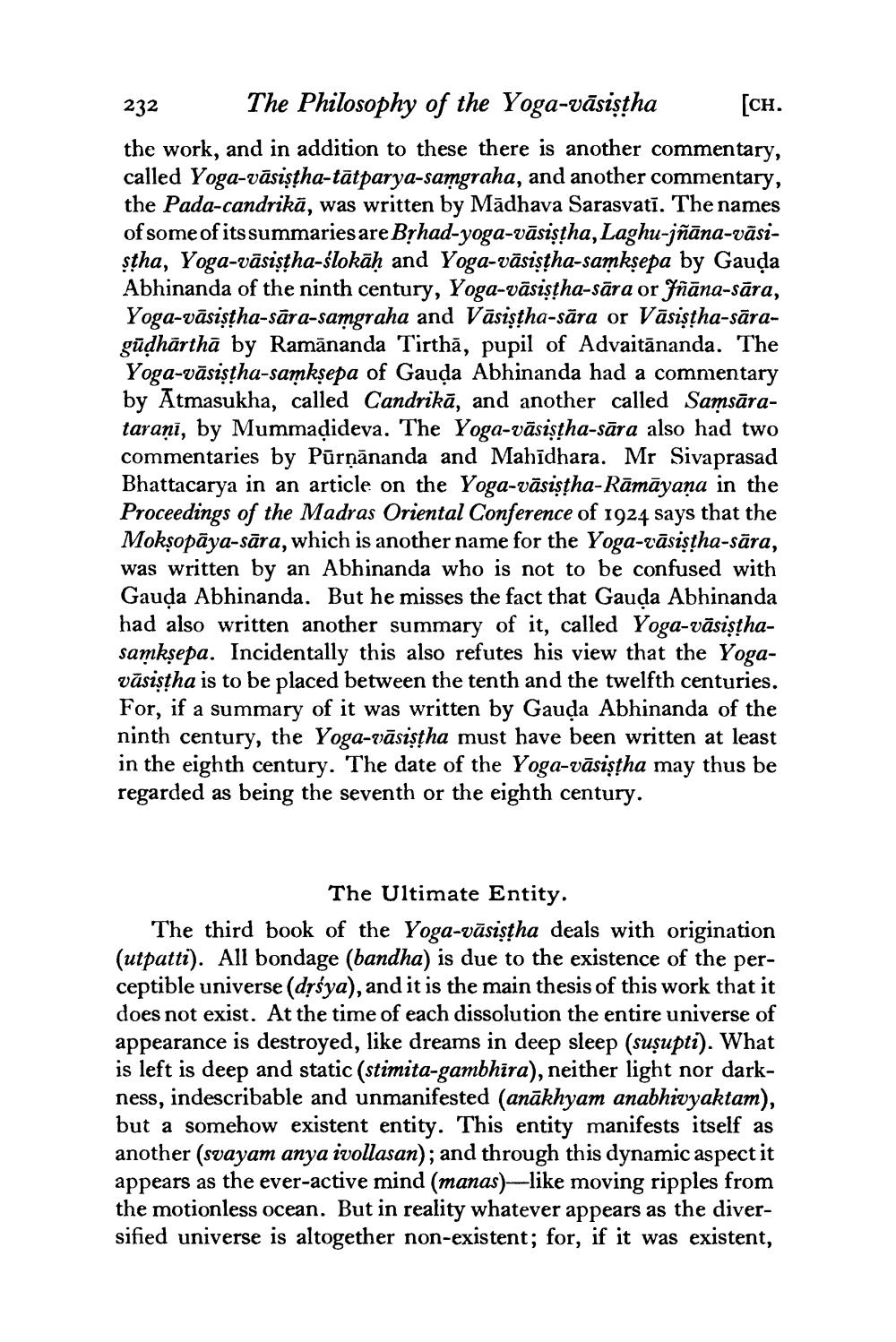________________
232
The Philosophy of the Yoga-vasistha
the work, and in addition to these there is another commentary, called Yoga-vāsiṣṭha-tātparya-samgraha, and another commentary, the Pada-candrikā, was written by Madhava Sarasvati. The names of some of its summaries are Bṛhad-yoga-vasistha, Laghu-jñāna-väsistha, Yoga-vasistha-slokāḥ and Yoga-väsiṣṭha-samkṣepa by Gauḍa Abhinanda of the ninth century, Yoga-väsiṣṭha-sara or Jñāna-sāra, Yoga-väsiṣṭha-sara-samgraha and Vāsiṣṭha-sāra or Väsiṣṭha-sāragūḍhārtha by Ramānanda Tirthā, pupil of Advaitānanda. The Yoga-vasistha-samkṣepa of Gauḍa Abhinanda had a commentary by Atmasukha, called Candrikā, and another called Samsarataraṇī, by Mummaḍideva. The Yoga-vāsiṣṭha-sāra also had two commentaries by Pūrṇānanda and Mahidhara. Mr Sivaprasad Bhattacarya in an article on the Yoga-vāsiṣṭha-Rāmāyaṇa in the Proceedings of the Madras Oriental Conference of 1924 says that the Mokṣopāya-sāra, which is another name for the Yoga-vāsiṣṭha-sāra, was written by an Abhinanda who is not to be confused with Gauḍa Abhinanda. But he misses the fact that Gauḍa Abhinanda had also written another summary of it, called Yoga-väsiṣṭhasamkṣepa. Incidentally this also refutes his view that the Yogavāsiṣṭha is to be placed between the tenth and the twelfth centuries. For, if a summary of it was written by Gauḍa Abhinanda of the ninth century, the Yoga-vāsiṣṭha must have been written at least in the eighth century. The date of the Yoga-vāsiṣṭha may thus be regarded as being the seventh or the eighth century.
[CH.
The Ultimate Entity.
The third book of the Yoga-väsiṣṭha deals with origination (utpatti). All bondage (bandha) is due to the existence of the perceptible universe (drsya), and it is the main thesis of this work that it does not exist. At the time of each dissolution the entire universe of appearance is destroyed, like dreams in deep sleep (suşupti). What is left is deep and static (stimita-gambhira), neither light nor darkness, indescribable and unmanifested (anakhyam anabhivyaktam), but a somehow existent entity. This entity manifests itself as another (svayam anya ivollasan); and through this dynamic aspect it appears as the ever-active mind (manas)—like moving ripples from the motionless ocean. But in reality whatever appears as the diversified universe is altogether non-existent; for, if it was existent,




